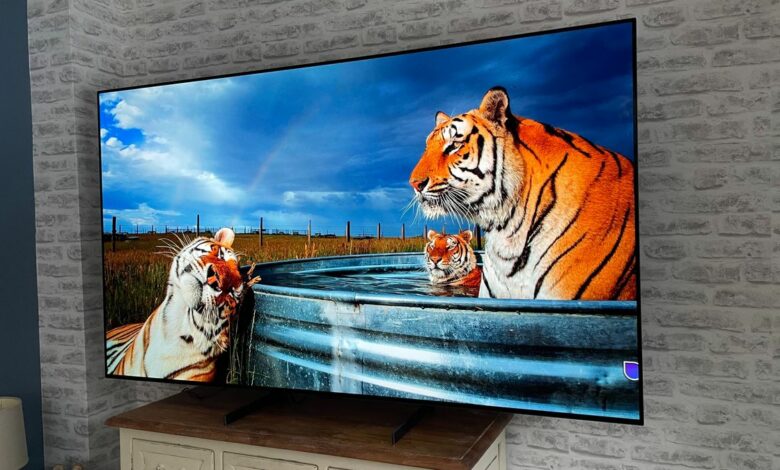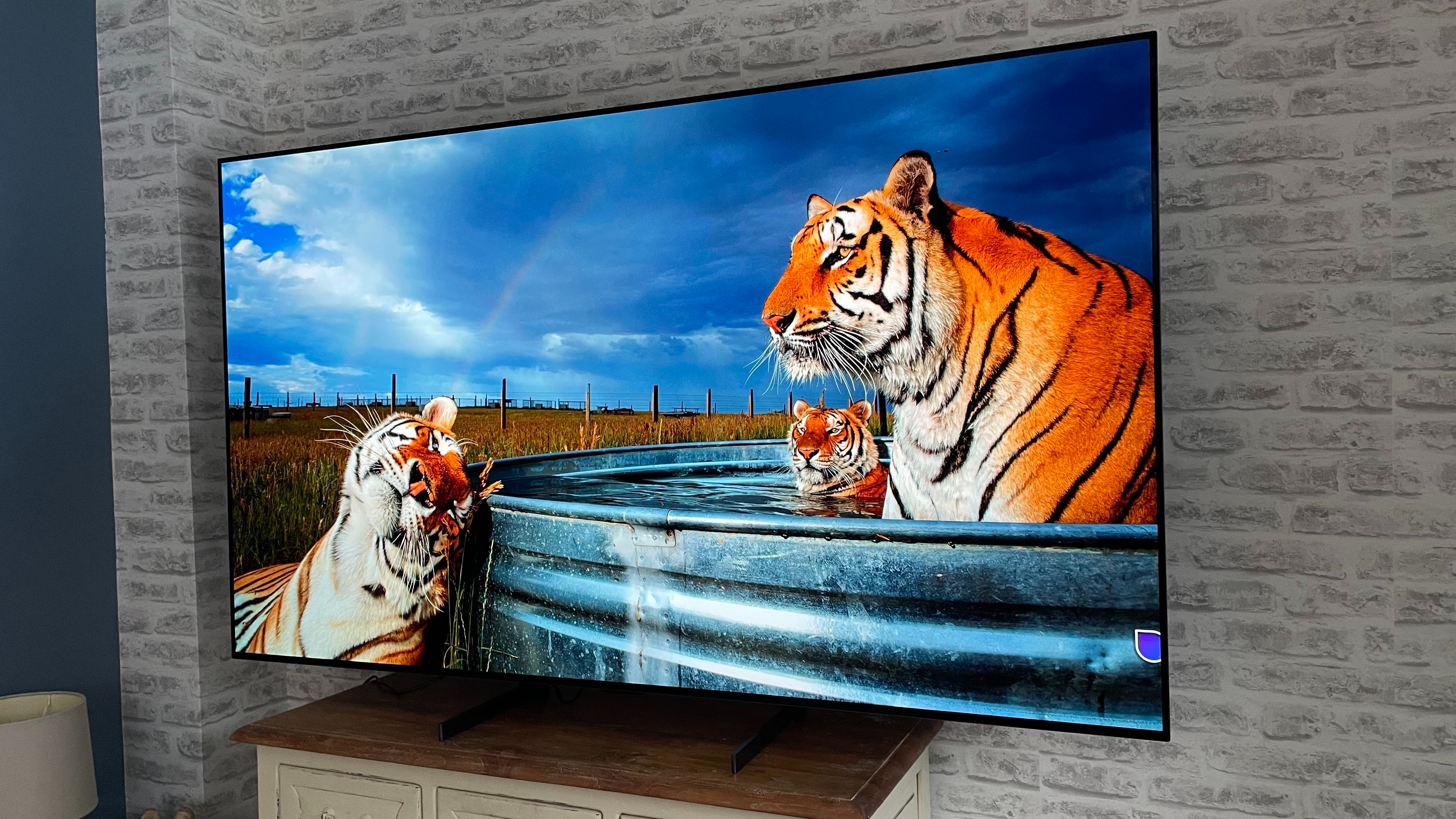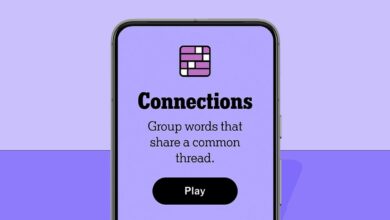The key to the next generation of brighter OLED TV technology has just been delayed – but thankfully not by much


As we’ve reported before, one of the most promising pieces of TV technology is blue phosphor OLED technology. Phosphor OLED material is more efficient and offers higher brightness without requiring as much power, which allows it to run cooler. This technology is already used in read and green OLED pixels, but blue pixels have proven to be the most challenging to produce.
Blue phosphor OLED has been the next big trend in TV technology for a while now, with companies like LG and Samsung considering adopting them as they get closer to reality. That’s no surprise in Samsung’s case, as while all of the best OLED TVs will benefit from better blue pixels, Samsung’s QD OLED displays will particularly benefit as they’re composed of largely of blue pixels (with a quantum dot layer over it to change the colors).
But it looks like there’s a slight bump in the road to our brighter OLED future. According to the latest financial results from Universal Display Corporation, the company behind blue phosphor OLED technology, it’s going to take a little longer than expected to commercialize the technology. That’s the bad news. The good news? The extra time is “measured in months, not years,” and the company expects to have a commercial blue phosphor OLED material ready by 2025.
Why PHOLED is Awesome
We should always take manufacturers’ numbers with a large dose of salt, but in theory phOLED displays are capable of 100% internal light output compared to the 25% of their less bright fluorescent material counterparts, which is currently the case with blue OLED pixels. This means you can achieve higher brightness without increasing the amount of heat the pixels generate.
Red and green phOLEDs have proven relatively easy to make, but blue ones are more challenging: in 2022, manufacturers were not yet able to make stable blue phOLED emitters. That changed in 2022, and the expectation was that we would see blue phOLEDs in TV panels and possibly smartphones in 2024, but that has proven to be overly optimistic.
What we don’t know from UDC’s announcement is what caused the delay. But reports suggest it’s struggling with efficiency and longevity. A report in The Elec In late 2023, Samsung said it had postponed its plans for the blue phOLED to the second half of 2025, a year later than previously planned; analysts at UBI research said the blue phOLEDs still suffered from a “short lifespan” of about 55% compared to existing fluorescent blue OLEDs.
So for the time being, the best TVs won’t be full of blue phOLED pixels. But the technology remains promising and should deliver significantly brighter TVs without compromising longevity… we may have to wait until 2026 or even 2027 for the results.




